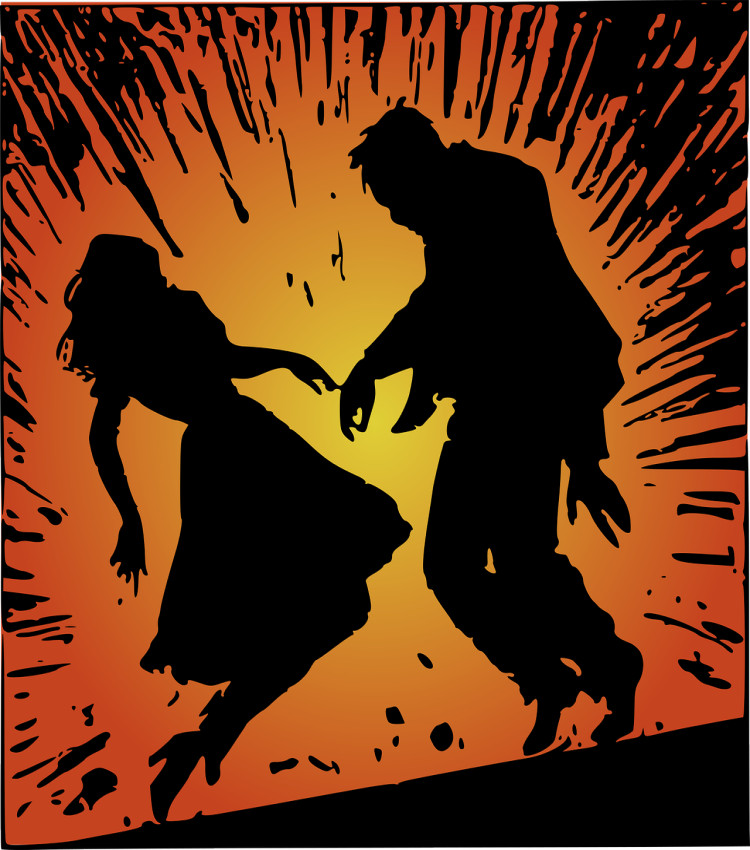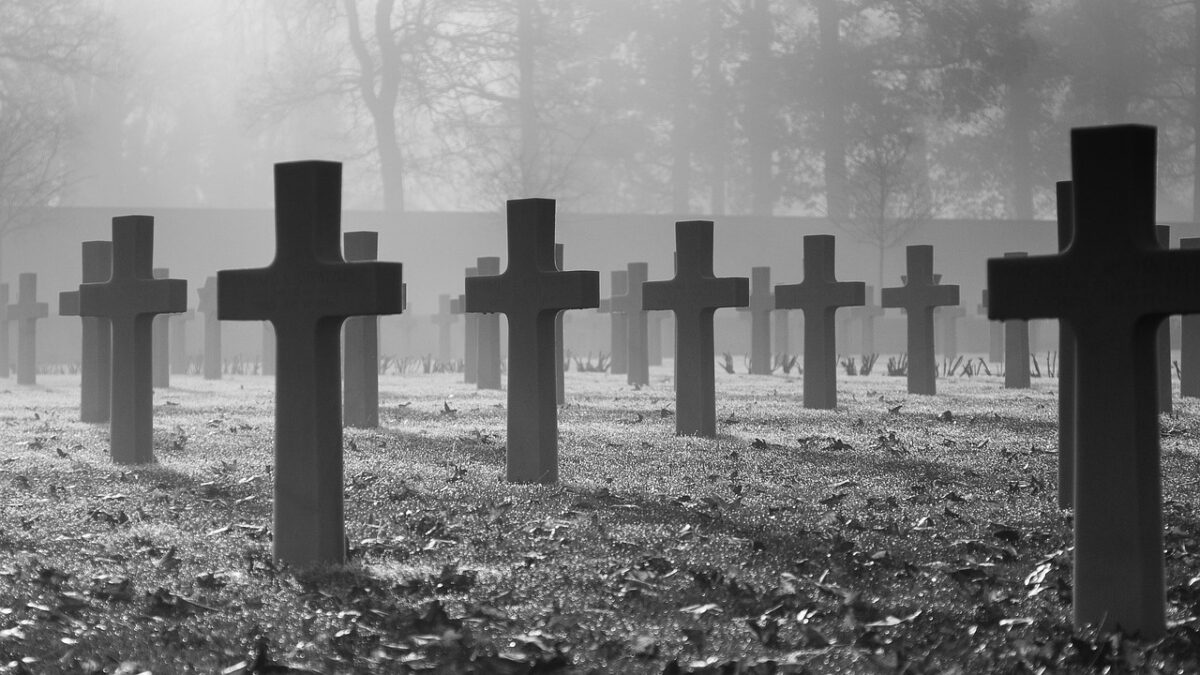Consuming drugs The Drug Dealer
It is hard to avoid messages that ‘drugs’ are inherently evil, a plague and a threat to society, which needs to be urgently eradicated. We are told by the media, celebrities, experts and politicians that ‘drugs’ destroy lives and if you use them even once, they will fry your brain, take away your free will and turn you either into a victim or an irrational, sick, corrupt and sadistic individual (Bancroft, 2009). It is through such frightening representations that politicians at national and international levels legitimise the ‘War on Drugs’, with all the accompanying harmful punitive responses that you saw in Chapter 1.
You will explore further in this chapter how the prohibitionist regime produces an overly simplistic and distorted understanding of drugs, their consumption and any associated harms. As you saw in Chapter 1, drugs are psychoactive substances that affect the way the mind and body work, regardless of whether their use is legally prohibited or medically approved. However, you also saw that their legal and moral status has changed, both over time and across countries.
To seek a deeper understanding of these ideas, the chapter will introduce you to the perspective of cultural criminology, which is essentially concerned with exploring how crime (here drugs) and drug control are constructed, enforced and resisted in current times (Ferrell et al., 2008).
The chapter then returns to the morally neutral definition of drugs as psychoactive substances that affect the mind and body – focusing on sugar. Sugar is a stimulant, like cocaine (Reichelt, 2017), in the sense that it releases dopamine in the brain, a neurotransmitter that affects feelings of reward and pleasure. While the production and consumption of sugar are not constructed as deviant or criminal, they are harm-inducing.
In addition to harming people’s health, you will see that sugar had an integral role in some of the most serious harms committed against humanity by states and corporations. Through the investigation of the legal drug of sugar the chapter will illuminate the geographical dimensions of harm and how these harms manifest over time.
Black Community
At the end of the 19th century, specific substances, like opium, cocaine and marijuana, were labelled with notions of ‘evil’ that associated certain ethnic groups (Chinese, African-American and Mexican people) and political groups (communists) with imagery of moral depravity and vices. This depravity, it was purported, would spread to the ‘pure’ white population, corrupting women, children and the working classes (Mena and Hobbs, 2010, p.64).
For example, as the New York Times 1914 article, above, depicts, in the early 20th century in southern states of the United States, there was a construction of myths and moral panics about African- American men and the use of cocaine. In this article it is argued that black men under the influence of cocaine were becoming bulletproof while committing violent sexual crimes against white women (Mena and Hobbs, 2010).
Racist representations such as these facilitated the criminalisation of cocaine and legitimised the continuation of violence and oppression against the African-American population after slavery had ended (Mena and Hobbs, 2010; Barton, 2011).
As cultural criminologists argue, criminal behaviour such as drug use is defined by those with more power who construct meaning downwards by imposing their interpretation, moral judgements and feelings about the behaviour of the less powerful (Hayward and Young, 2004;
Ferrell, 2013). Therefore, the association of drugs with notions of ‘evil’ constitutes an exercise of power from above that underpinned and justified social exclusion and legitimised hostility and violence towards specific ethnic and political groups (Mena and Hobbs, 2010). By seeing drugs as a cultural product, you can understand how power and power differentials shape meanings, and constructions of legality and illegality.
Importantly though, when drugs are viewed as a cultural product it is possible to explore how the meanings assigned by the powerful can be contested. For example, the 1960s hippy counterculture, that you saw in Chapter 1, denied among other things the norms and definitions of drugs by the state with the view: we are not doing anything bad, we just want to experience pleasure, intoxication, our world and ourselves in a way that’s different to yours.
As such, hippies constructed the meaning of drug control by the police as an illegitimate invading force that creates more problems than it solves (see Mena and Hobbs, 2010). Consequently, meanings about legitimacy and illegitimacy, proper and improper, are not only constructed downwards by the powerful but also upwards by the less powerful (Hayward and Young, 2004).
And different meanings of the same issue might overlap and be contested, while also changing over time. You will probably have heard different discourses in relation to the use of cannabis and you may have seen that they have been changing in recent years in the United States, Uruguay and Europe as groups of people claim their right to use the substance for recreational, medicinal and spiritual purposes.
Indeed, there is a constant interaction and contestation between the construction of meanings downwards and upwards, which becomes even more intense in our contemporary world, which is saturated with mass media. The latter is the second feature of cultural criminology that you will now explore.

Part2
No one can tally accurately the total number of lives saved by widespread vaccination, but it remains one of the greatest achievements of modern medicine. Measles, for example, was killing more than two million children a year worldwide in the 1980s; by 2015, according to the World Health Organization, vaccination had dropped the death toll to 134,200. Mass vaccination has ended polio in all but three countries; Bangladesh and its giant neighbour India were pronounced polio free in March 2014.
As the industry data specialist Statista puts it, ‘The pharmaceutical industry is responsible for the development, production and marketing of medications. Thus, its immense importance as a global sector is inarguable.’ (Statista, n.d. a). But at the same time, despite the obvious benefits associated with the pharmaceutical industry, its global reach does not ensure equitable outcomes in terms of the major causes of premature deaths across the Global North and the South. The majority of deaths in high-income countries – such as the United States or the UK – are the result of so-called ‘life-style diseases’ related to heart disease, cancers and dementia; meanwhile, in 2019, in Kenya, the leading cause of death was diarrhoeal diseases (Ritchie and
Roser, 2019).
Thus, writing in 2019, development economists Hannah Ritchie and Max Roser noted that:
Deaths from causes such as infectious disease, malnutrition, nutritional deficiencies, neonatal and maternal deaths are common – and in some cases dominant – across low – and middle-income nations…In South Africa and Botswana, the leading cause of death is HIV/AIDS. (Ritchie and Roser, 2019)
So while the pharmaceutical industry is predominantly considered as providing products which respond to harms, it can also exacerbate global inequalities by focusing on the areas with the wealthiest populations, governments and therefore markets, as opposed to those with the greatest health needs.
Cost to society
Patients pay way more for medications than twenty years ago. In the USA, prescription drug spending grew 3.1 times more than inflation between 2001 and 2021; in Europe, the absolute expenditure in prescription drugs increased by 157% between 2000 and 2025, while the inflation in that period has been around 60%.
In particular, some drug prices have soared, as in the case of insulin in the USA, which costs 14 times more now than in 1996. Overall, the pharmaceutical industry’s global margin has risen from 13.8% in 2001 to more than 23% today.
By contrast, and despite massive fluctuations in supply, purity, interdiction efforts, and violence, the price of illegal drugs has been stunningly rigid for decades. The inflation-adjusted retail price of cocaine, for example, has hardly changed for twenty years – around €60 per gram in most EU countries. Similar trends are seen with heroin: prices per gram in Western Europe fell in real terms from the 1990s to 2010s while purity rose.
This has puzzled economists for years, but a relevant reason for this price behavior seems the inability of such a non-structured market (illegal micro-street dealers for the most) to actually act like a monopoly and manipulate prices at retail level.
In short, an illegal drug user today often pays no more for a hit than 20 years ago . If the Pharma industry had applied that sort of price rigidity to prescription drugs, US and European patients and health systems would have saved an estimated 2 trillion dollars in this century.
So, the illegal drug trade seems to be way more customer-friendly, although it’s worth noting that indirect costs to society (overdoses, crime, prisons, loss of productivity, etc.) are estimated at around 300 billion per year
Jobs
Globally, about 5.5 million people work directly in biopharmaceuticals, and when you include supporting industries and services, over 74 million jobs worldwide are supported by pharma’s economic activity. These are generally stable, well-paying jobs with benefits.
The illegal drug trade, being clandestine, does not provide legitimate jobs or tax revenue, but it does sustain a vast underground economy. It financially supports networks of farmers, illicit chemists, traffickers, distributors, money-launderers, enforcers, and street dealers; it’s estimated that around 4 million people live off the illegal drug trade in Mexico alone, while at least 100,000 farmers in Afghanistan cultivate poppy seeds for the heroin trade.
While the size of both workforces may be similar, the distribution of wealth is significantly more unfair in the cartel world. A study dating back to 2005 established that street-level drug dealers make a measly $5 per hour, way below minimum wage (adjusted to 2025 prices), while an entry-level junior position in Pharma will easily pay 40.000 dollars. And junior-entry jobs in Pharma also carry far less risk of catching a bullet, even if the overtime sometimes can be pretty stressful.
At the very top, Pharma CEOs can make 20-30 million dollars per year, but that’s nothing compared to cartel bosses – a lot of them had personal fortunes of over 5 billion dollars already back in the 1990s. That’s a point for Pharma, clearly.
At the bottom level, drug crop farmers earn very little. 1 ton of coca leaf is worth ~$400–$500 to farmers who live in poverty, while the kilo of cocaine it produces sells for hundreds of times that amount. That sounds less than ideal, but, at the bottom of the pyramid, the illegal industry actually pays better: a Peruvian farmer makes even less money producing cinchona tree (basis of Quinine production) for the Pharma industry (or coffee, for that matter) than coca leaf for the Cali Cartel.
Either way, from a career point of view, the pharmaceutical industry is certainly a more lucrative (and much less risky) option.
Cultural criminology: drugs as ‘cultural product’
Drugs can be extracted from nature or synthesised in laboratories and can be used for a variety of reasons including medicinal, recreational and spiritual (Coomber et al., 2013, p. 3). A substance is defined as a drug by its pharmacological properties (that is, the way it affects the mind and body depending on whether it is a stimulant, depressant, hallucinogen or analgesic).
According to this definition therefore, substances you might not normally think of as being drugs, such as sugar, coffee, tobacco and alcohol are drugs because they affect how the mind and body works. So why are these substances not normally considered to be drugs?
Following the perspective of cultural criminology, ‘drugs’ are not only defined by their pharmacological properties. Instead, they constitute social constructs and therefore they are a cultural product.
Their meaning is culturally defined and shaped by moral judgements and discourses depending on the historical moment, geographical context and context of use. Substances are reclassified and redefined depending on the cultural and geographical setting and historical period.
If you see drugs as a cultural product, you can understand why the geographical, cultural and temporal context of use is highly important, as it involves moral judgement and meaning. These determine whether the use of a particular drug is proper or improper (for example lighting a cigarette in the classroom).
Indeed, the cultural context defines how ‘medicines become drugs and drugs become medicines’ (Becker, 2001, p. 3). Cannabis can be used for medical purposes, but it ‘becomes a drug’, for example, when it is used for recreational purposes on a night out. The same can be true for opioids.
So, the crucial step is the process of definition in the construction of meaning (Ferrell et al., 2008), namely that someone has to do the defining and has to have the power to dictate that a particular combination of a person, substance and context of use is inappropriate and out of place (Becker, 2001). Ultimately then, the construction of meaning of what is considered a ‘drug’ or not (how specific substances can or cannot be thought and talked about) is an issue of power.
For example, before the beginning of the 20th century there was no notion of ‘drugs’, in the sense of substances that are now defined as harmful, illegal and restricted by law (Seddon, 2010). Indeed, as you saw in Chapter 1, opioids and cocaine were freely available as medicines and energetic tonic drinks (Coca-Cola’s initial recipe contained both cocaine and the caffeine-containing kola-nut) and the British Empire was the biggest opium ‘trafficker’ at the time (Bancroft, 2009; Berridge, 2014).
The definitional process that altered the meaning of specific psychoactive substances during the 20th century involved various moral entrepreneurs such as politicians, agents of governmental and commercial interests, experts, celebrities, conservative activists (for example, members of the temperance movement), the church, the media and of course the state. The state has the ultimate power over definitions of legality to define specific substances, users and contexts of use as a problem (Mena and Hobbs, 2010; Berridge, 2014).
Indeed, and as strange as it may seem now, there was no discussion on ‘drugs’ or the ‘problem of drugs’ before the end of the 19th century. By looking at the trajectory of the meaning of the concept of ‘drugs’, from not existing at all to the current negative connotation, you can begin to understand the importance of looking at drugs as a cultural product that is constructed by discourse and power.
The negative connotation of substances started in the UK and the United States towards the end of the 19th century in relation to the morals of the working classes within the context of increased urbanisation and industrialisation. The working-class consumption of particular substances (alcohol, cannabis, opium and cocaine) was seen by prohibitionists to be morally corruptive (Barton, 2011) and the idea of ‘the dangerous other’ was constructed, creating a fear factor.
As you saw in Chapter 1, the prohibitionist regime was largely underpinned by racist and conservative ideologies. This process of othering linked views about degrading morals of the working class to particular ethnic and/or political groups and to notions of crime and depravity (Barton, 2011; Berridge, 2014).
Othering is the process of linking the members of a particular group with moral depravity, vice and crime, dehumanising them and constructing them as being apart and a danger to ‘normal’ society. Othering supports the criminalisation of these groups’ practices and legitimises violence and oppression against them.
Dealing in drugs
Most of the time phrases such as the ‘drugs trade’, ‘drug addiction’ and ‘drug dealers’ have a certain connotation relating to the harms (and crimes) associated with ‘drugs’.
For the most part, the images, representations and associations conjured up by these will not involve companies such as Pfizer, Roche or Bristol-Myers Squibb, nor products such as Oxycontin or Thalidomide.
In this chapter you will consider how drugs available on prescription or over the counter, that is, the legal products of the pharmaceutical industry, are not necessarily less – and can be more – harmful than those drugs prohibited by law over which ‘wars’ are waged by states (as you read in Chapter 1).
If this is the case, then it is at least plausible to think of those who develop, make and sell these legal drugs – the pharmaceutical industry – as drug dealers, in the literal and also the pejorative sense of this term.
This chapter focuses on the nature, structure and, in particular, the harms produced by the global pharmaceutical industry – an industry of such scale and reach that it is often colloquially referred to as ‘Big Pharma’.
While reading the chapter, you will be thinking about a specific class of drugs: ‘substances that we identify as pharmaceuticals [which] are simply those substances that we use as human (or animal) medicines’ (Taylor, 2015, p. 5).
So far, you have explored how some drug harms come to be constructed as crimes and how other harms come to be deconstructed, neutralised and rendered invisible or even desirable by powerful interests. This chapter shifts the focus even further away from harms that are criminalised and examines:
- . harms that are entirely legal
- . harms that sit within a grey area between legality and illegality
- . harms that are regulated as potentially criminal but where such regulation is un- or under-enforced.
The picture that emerges is that harm and crime is routine, widespread and normalised across the pharmaceutical industry.
Introducing Big Pharma
Medicines have, of course, been in existence as long as humankind, but there have been two major game-changers in the prevention and treatment of diseases: the discovery of antiseptics and vaccines from the 19th century onwards; then, the emergence of multinational pharmaceutical companies during the 20th century.
There is no doubt that millions of lives have been saved through the development of the modern pharmaceutical industry; for example by 1980, smallpox is said to have been eradicated from the globe through systematic and sustained programmes of vaccination.
Health researcher Cynthia Gorney writes of seeing the vaccination card of a young girl, Sanjida, born in Bangladesh in 2005, who within weeks of her birth was an early beneficiary of Bangladesh’s new, free national immunisation plan, receiving vaccinations against whooping cough, measles, diphtheria, tuberculosis, tetanus, hepatitis B, and polio. She notes how ‘an extraordinary global health history had been abbreviated’ on Sanjida’s vaccination card:
Who is the Drug Dealer?
Ask youself the question and find the answer which you may already know, the real dealer drug dealer is the big pharma , deliberately killing people thousands every year and if they found out so what?
At the cpirt they will pay a fee of some million dollars which is the 0,001 of their profits. Some corporations they do it in purpose and they are happy to pay the fine. I believe Google stands out as a good example. The big pharma and corporations are the real drug dealers and not the working class man in the corner.
Big Pharma vs. the Drug Cartels
Global pharmaceutical drug sales reached $1.6 trillion in 2023, including everything from chemotherapy to over-the-counter cough pills. In contrast, the illegal drug trade, composed mainly of cannabis, opioids, cocaine, amphetamines and psychoactives, is estimated at $650 billion annually, roughly one-third the size of pharma.
Beyond sales, drugs are also a business with hefty margins. ‘Blockbusters’ (treatments with sales over $1 billion), which constitute almost half the total Pharma sales, have an average profit margin of 40% – even more for the most innovative drugs (90% in the case of Trikafta, a cystic fibrosis treatment). All in all, prescription drugs have operating margins around 35%.
By comparison, cartels enjoy astronomical markups but with more covert math. A kilo of coca leaf costs only a few dollars on the farm, whereas cocaine can sell for $150,000 a kilo on US streets once diluted into retail quantities – a staggering markup of 30,000%. But, all in all, the profit margin for the drug cartels usually remains at around 25% once manufacturing, smuggling, retail and losses to law enforcement are accounted for.
Health
Pharmaceuticals have undeniably revolutionized global health. Antibiotics, antivirals, insulin, and vaccines have drastically increased life expectancy, contributing significantly to the global lifespan leap from approximately 50 years in 1900 to over 72 years today.
Yet pharmaceuticals are not without dark chapters: the opioid crisis, driven by aggressive marketing of painkillers like Purdue Pharma’s OxyContin, resulted in over 500,000 deaths from overdoses in the USA between 1999 and 2020, which means that the pharmaceutical industry has killed more Americans than every war the USA have been involved in since World War II, including World War II. Or take the thalidomide tragedy of the late 1950s, which caused over 10,000 severe birth defects globally, underscoring the catastrophic consequences when profit motives override patient safety.
Illegal drugs, meanwhile, have no positive effect in society’s health whatsoever, and the fact that they are manufactured and distributed with absolutely no control or regulation means they are responsible for an estimated half a million deaths per year globally – and also play a major role in the spread of diseases like Hepatitis or AIDS.
So, all points go to the legal drug industry, although points to non-corrupt regulators too – without them, it’s hard to conceive that these two industries would be very different .
And the real difference is…
About 13% of adult US citizens are on antidepressants, and yet only a small fraction of pharmaceutical sales is for mood- or mind-altering medications. Antidepressants, tranquilizers, prescription stimulants for ADHD and similar CNS-active drugs, in absolute terms, make for some 50-60 billion dollars, about 5% of Pharma sales.
In contrast, the illegal drug trade deals almost exclusively with mood-altering chemicals. Cocaine, Heroin, LSD, Cannabis, MDMA… 95 % of all illegal drugs are meant to mess with your mood or your mind (the other 5% are doping substances and counterfeit therapeutics). In terms of market size, illegal drugs dwarf legal mood-altering pharmaceuticals by ten-to-one.
That’s relevant, because illegal drugs are a major influence in art; Marijuana was essential to Allen Ginsberg, like peyote was to Antonin Artaud; LSD enlightened Pink Floyd, Francis Bacon painted most of his work on amphetamines, Sigmund Freud was hooked on cocaine and heroin gave us Egon Schiele and The Velvet Underground.
Almost every cultural and artistic revolution of the 20th century was fueled by illegal drugs, and in that department, the legal drug trade has done rather little – except perhaps the fact keeping Leonard Cohen alive and well into his old age, which by itself is a lot.
So, in its ability to reshape the human mind and spirit, all the points go to the drug traffickers
Lorem ipsum dolor sit amet, consectetur adipiscing elit. Ut elit tellus, luctus nec ullamcorper mattis, pulvinar dapibus leo.






